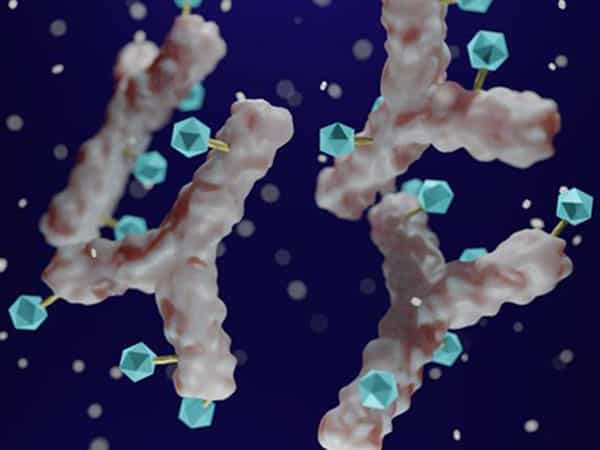New Therapy Targeting Malignant B Cells
The FDA has approved a new antibody-drug conjugate to treat two types of non-Hodgkin B-cell lymphomas
The U.S. Food and Drug Administration (FDA) has approved polatuzumab vedotin-piiq (Polivy), in combination with a rituximab product, cyclophosphamide, doxorubicin, and prednisone (R-CHP), for the treatment of adult patients with untreated diffuse large B-cell lymphoma, not otherwise specified (DLBCL-NOS), or high-grade B-cell lymphoma (HGBCL).
The therapy is intended for patients with a score of 2 or greater per the International Prognostic Index, indicating a low intermediate, high intermediate, or high risk of a poor outcome.

Polatuzumab vedotin-piiq is an antibody-drug conjugate, a two-part molecule consisting of an antibody tethered to a toxic drug. The antibody binds to a target on the surface of cancer cells, and the complex is engulfed into the cell, where it releases its toxic payload, thereby killing the cell.
Polatuzumab vedotin-piiq targets CD79b, which is expressed on the surface of malignant B cells.
The approval was based on the randomized, double-blind, placebo-controlled, phase III POLARIX clinical trial, which enrolled 879 patients with untreated large B-cell lymphoma with an International Prognostic Index score of 2 or greater. Half of the patients received R-CHP plus polatuzumab vedotin-piiq, and half of the patients received R-CHP plus vincristine (R-CHOP), a common first-line therapy for B-cell lymphomas.
Patients treated with polatuzumab vedotin-piiq plus R-CHP were 27% less likely to experience disease progression than those treated with R-CHOP. The researchers did not observe any significant differences in complete response rate or median overall survival between the two treatment arms.
DLBCL and HGBCL are both types of non-Hodgkin lymphoma that arise from immune cells called B cells. DLBCL accounts for 30 to 40% of all non-Hodgkin lymphoma cases, making it the most common form of the disease. Molecular characteristics of DLBCL can stratify the disease into subtypes, but when a case does not fit into any of those subtypes, it is considered DLBCL-NOS.
According to federal statistics, it was estimated that 80,550 individuals would be diagnosed with non-Hodgkin lymphoma and 20,180 patients would die of the disease in the U.S. in 2023.
The FDA rendered its decision on April 17, 2023.